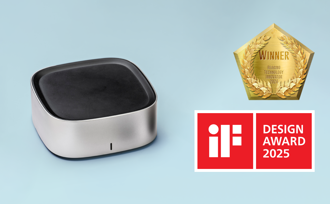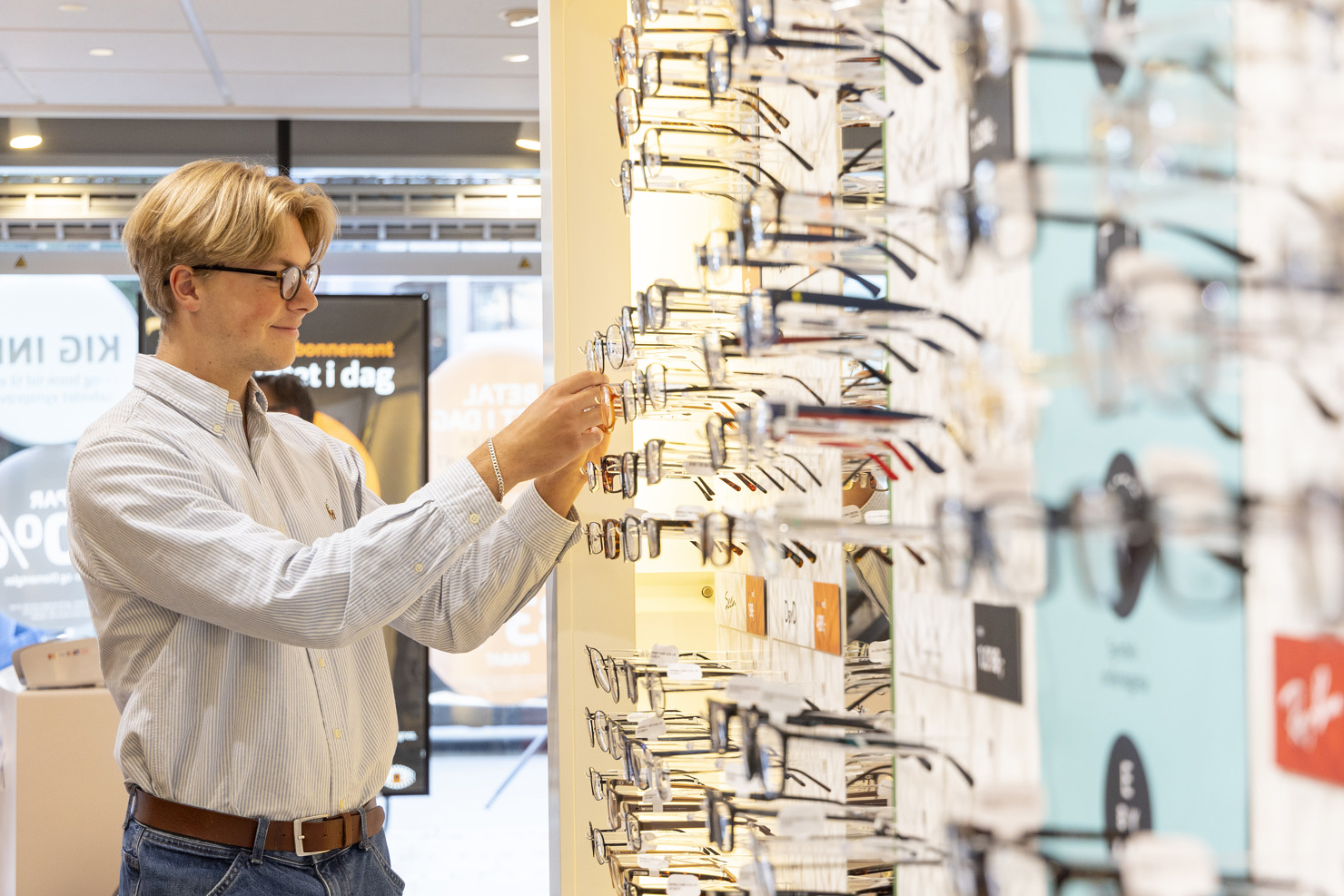
Hearing aids often carry a stigma, with the perception that the wearer is old – and wearing them is something to be ashamed of. On the other hand, people believe that eyeglasses make the wearer seem smart and fashionable.
This wasn’t always the case. Eyeglasses were once a sign of age and impairment – remember the old taunts of “four-eyes” for people who wore glasses? Or the cruel teasing that “boys won’t make passes at girls who wear glasses?” But times have changed and now glasses are often seen as a fashion statement and a cool, trendy accessory.
The same evolution is (slowly) happening for hearing aids, which are becoming more innovative and will hopefully be considered a helpful piece of wearable technology – not a stigmatizing burden – in the very near future.
Misconceptions Around Hearing Aids
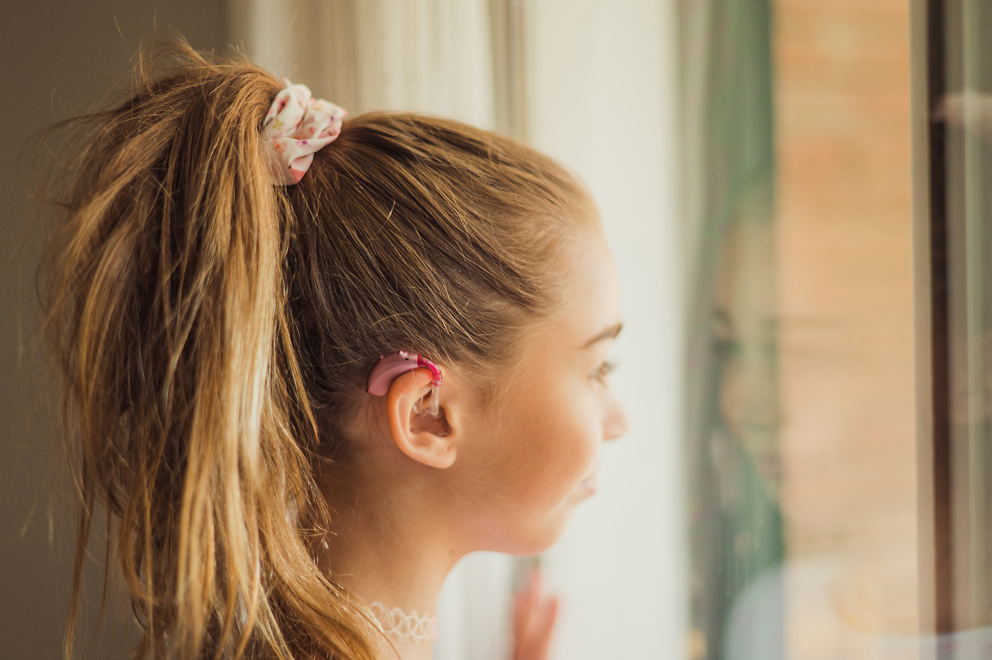
Unfortunately, some people still think that hearing aids are for “old” people and that if they wear them, they will look old, feeble, or weak. Additionally, many people feel embarrassed about their hearing impairment and concerned about the social stigma of hearing loss, so they don’t want others to know about their hearing loss (or to see them wearing hearing aids).
Is wearing hearing aids a disability? Many people worry that it may be perceived that way, and they’ll be viewed as “stupid” or “slow” if they wear these devices.
Why Are People Hesitant to Wear Hearing Aids?
One study found that hearing aid stigma has to do with people’s feelings of altered self-perception due to their hearing loss, worrying that it will make them seem “disabled” or “cognitively impaired.” These worries actually cause people to delay seeking treatment, such as having hearing screenings. According to the study, since our society idolizes youth and beauty, some people avoid getting hearing aids due to ageism and vanity.
Another survey by the Hearing Review indicated that people are not treating their hearing loss for the following reasons.
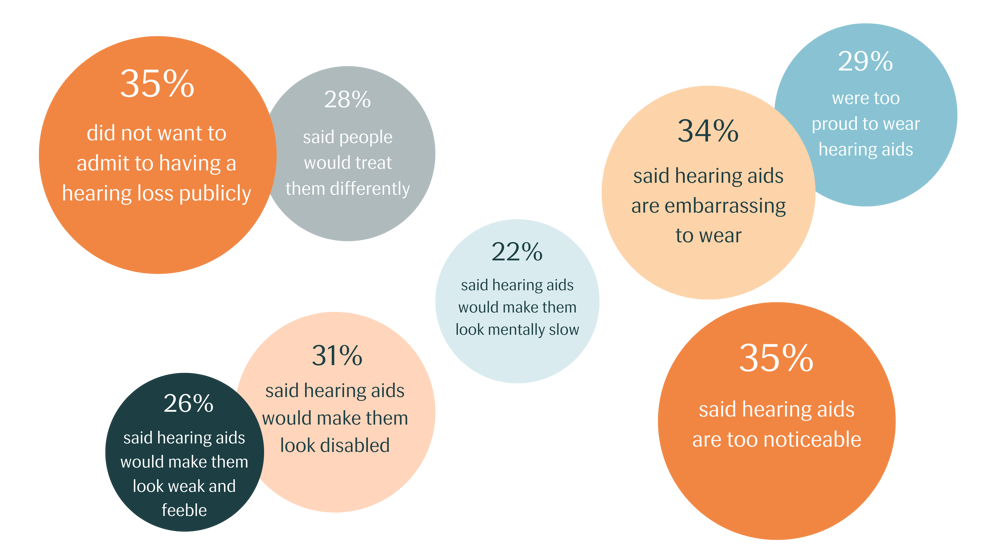
Likely at least in part because of the perceived stigma, many people who need hearing aids aren’t wearing them. Approximately 23 million adults in the United States alone have a hearing loss but don’t use hearing aids. In comparison, 166.5 million adults in the US wear prescription eyeglasses. More than 10 million Americans have undiagnosed vision problems, and 12.2 million American adults require some sort of vision correction but don't use any. In addition, while 93 million people in the US are at high risk for serious vision loss, only half of them have had an eye exam in the past 12 months.
Ironically, people are worried about hearing aids being embarrassing or noticeable, yet it’s noticeable to constantly ask people to repeat themselves because they aren’t able to hear them properly because they’re not wearing hearing aids to treat their hearing loss. Similarly, it’s noticeable when people respond inappropriately during conversations because they misheard (or guessed) what the other person (or people) were saying.
Age-Related Stigma

One of the biggest hearing aid stigmas centers around age. While people of any age can have hearing loss and need hearing aids, it’s true that many people experience age-related hearing loss later in life.
It’s clear that hearing declines with age: approximately 2% of adults aged 45 to 54 have disabling hearing loss. The rate increases to 8.5% for adults aged 55 to 64, then nearly a quarter (25%) of those aged 65 to 74, and half (50%) of those 75+ have hearing loss. Therefore, hearing loss is considered a condition associated with older people, and is often seen as a negative sign of aging.
On the other hand, glasses don’t have a similar perception. When looking at glasses vs. hearing aids, glasses don’t have the same negative associations, and are not considered as being primarily for “older” adults. Since most people start needing glasses sometime between the ages of 18 and 21, getting glasses is not something that’s considered to be geared towards older adults, the way hearing aids are.
According to the CDC, 7.1% of the US population aged 45+ wear hearing aids, and per The Vision Council, 63.7% of US adults wear glasses. Clearly, glasses are much more commonly worn than hearing aids. Therefore, it’s more widely accepted to wear glasses than hearing aids.
Glasses are widely accepted in media and society because of the large number of people that wear them. In fact, more than half of people (6 out of 10) in the developed world need to wear glasses or contact lenses. Because of the massive demand, glasses are much easier to purchase – and are more widely available – than hearing aids.
Glasses Are Shown Far More Frequently
Think about it: glasses are shown far more frequently on television, in the movies, on social media, and even in books than hearing aids are. In a steamy romance novel, they never describe the handsome hero carefully slipping off the heroine’s hearing aids in a moment of passion. Hearing aids aren’t embedded into popular culture – fashion, entertainment, social media, etc. – the way glasses are. Celebrities, musicians, influencers, and movie stars are regularly shown wearing glasses, but are not often portrayed wearing hearing aids. Hearing aid embarrassment is more prevalent and common than any hesitation people may have around wearing glasses – in part because hearing aids simply aren’t as widely shown or embraced in our society.
It’s common for people to say things like, “Oh, you’re too young to wear hearing aids” to anyone younger than 70 who is diagnosed with hearing loss, but no one ever tells someone they’re too young to wear glasses. This is, unfortunately, part of our culture – but it’s time for that culture to change.
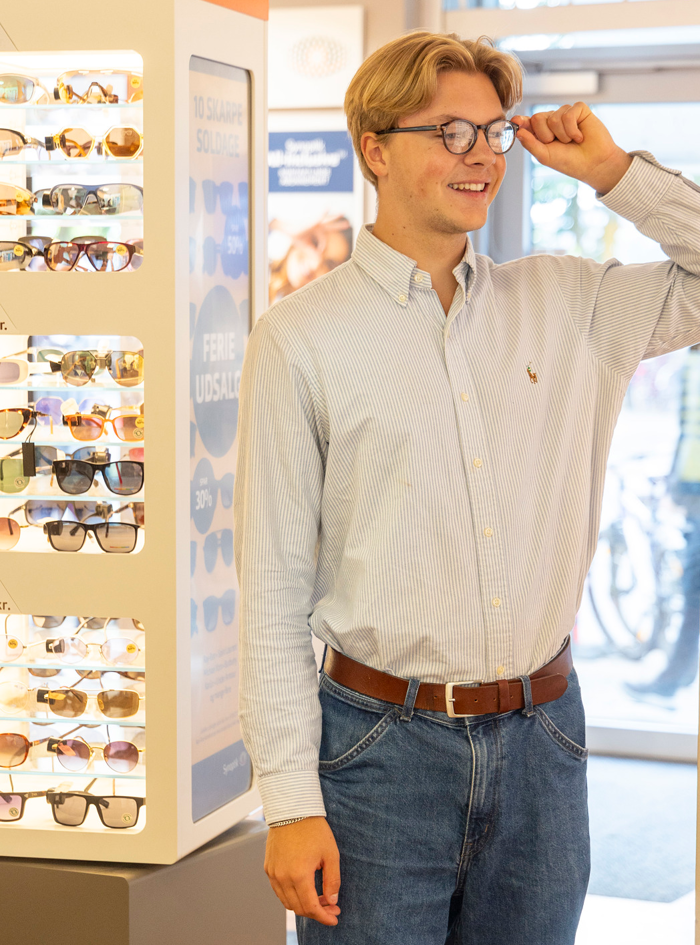
Glasses Are Considered Fashion-Forward; Hearing Aids Aren’t
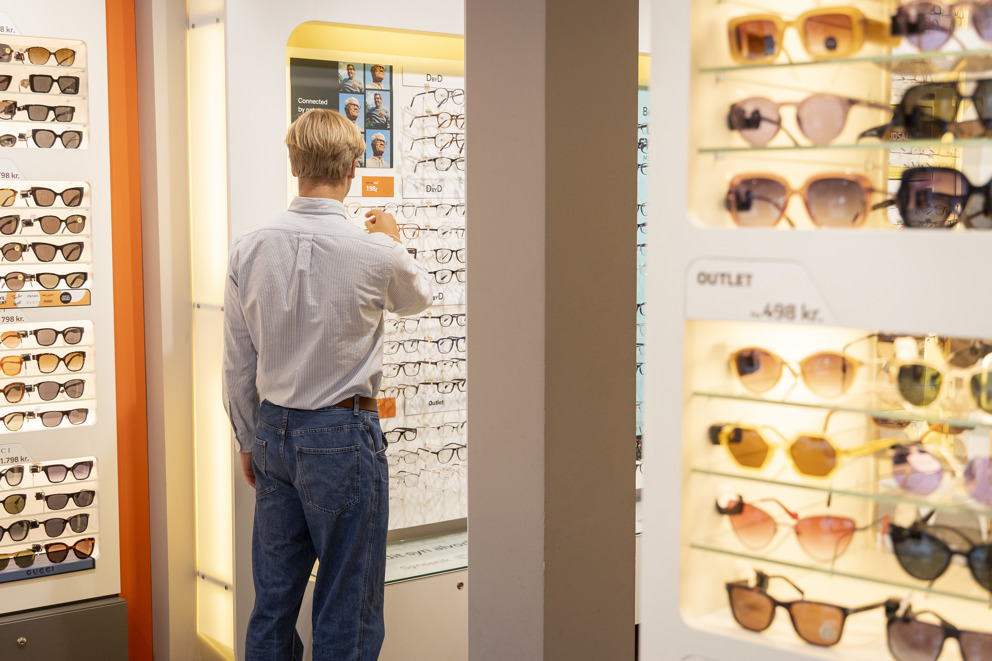
Another hearing aid stigma is about the way they look.
Glasses have become a cool fashion accessory. Eyeglass frames come in a variety of styles, shapes, and colors. High-end designers, like Prada and Burberry, make eyeglasses that range from trendy to classic. Athletic brands, like Nike, make sporty glasses. There are styles for every wearer – and every occasion.
Even people who don’t need corrective lenses sometimes wear glasses as a way to accessorize or switch up their look.
When it’s time to get glasses, people can pop into an optical shop without an appointment, which is not the case with hearing aids. The optical sales associates make it fun and fabulous to try on different frames and help select flattering styles that look best on each customer. It’s like shopping for any other accessory, with a wide selection of attractive options at a range of price points.
Conversely, shopping for hearing aids is a completely different type of experience. The salespeople talk about how small and discreet the hearing aids are. They spotlight how the devices are invisible and “impossible to detect” as selling points, making customers feel like they should be trying to hide their hearing aids.
The stigma seems to be, unfortunately, ingrained in people within the industry, even if we don’t consciously realize it. Instead of emphasizing the many benefits of hearing aids, the first thing we tend to mention is how small the hearing aids are, and this contributes to the stigma, even if that’s not our intent. Instead, we should focus on the benefits of hearing aids, and we should explain how the benefits outweigh any (real or perceived) negatives.
Therefore, let’s not talk about how hearing aids can barely be seen, which can make it seem like it’s shameful to need them, and like hearing aids need to be hidden. Unlike shopping for glasses, hearing aids are not positioned as an accessory, or something meant to be seen. Many customers complain that the experience is not fun or pleasant.
If we want to change the stigma around hearing aids, we need to change the experience, starting with how the hearing industry positions the hearing aids during the initial visits in the clinics.
Clinic staff should emphasize that hearing aids are available in a wide variety of styles that are much more innovative – and attractive – than the big, old, ugly, beige hearing aids of the past. Industry professionals should talk about how the devices fit in the ear and look like wireless earbuds, playing up the “innovative tech” aspect of the experience.
Today’s hearing aids are becoming more stylish and trendy, available in different colors, so customers can choose one that compliments their skin tone or style. Some hearing aid brands are finally making hearing aids more of a fashion statement, like glasses, by making fun, fashionable patterns for the devices.
It’s time to celebrate – not hide! – hearing aids!
Challenges That Hearing Aids Have – and Glasses Don’t
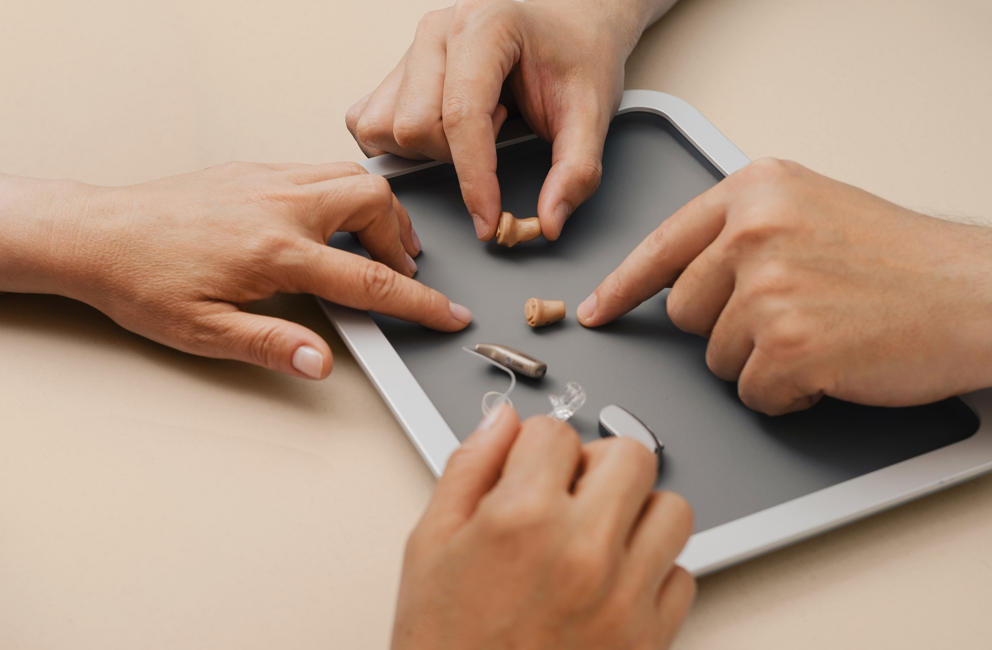
While both hearing aids and glasses are sensory aids, hearing aids come with some inherent challenges that glasses don’t, including:
- Hearing aids amplify all sounds, which may include those that people don’t want to hear, like the hum of the refrigerator and other background noises. Since hearing aids amplify all sound, they can also increase the user’s sensitivity to loud sounds. Comparatively, glasses never increase the wearer’s sensitivity to light or certain images.
- Hearing aids aren’t like glasses where the user puts them on, and everything is instantly clearer and need no adjustments. Hearing aids may need to be adjusted depending on the user’s surroundings, such as being in a noisy restaurant, or outside on a windy day. It’s easy to control the hearing aid through an app on the user’s phone and/or the phone’s lock screen to adjust the settings based on the environment, though.
- Adjusting to wearing new glasses takes hardly any time at all. When it comes to getting hearing aids, it can take more time to get used to the way they work. Since they amplify all sounds, it might be frustrating or confusing for a while. Eventually, the patient’s brain will adjust to all the new sounds. Higher quality hearing aids will compress those background noises better, but it will still require time to adjust.
- Hearing aids are not considered fashion accessories, like some glasses are, though some hearing aids now come in a wide range of styles and colors to be more fashionable and stylish and match the user’s personality, skin tone, etc.
- Unlike glasses, hearing aids need batteries to function.
- Sometimes, hearing aids can let out a sharp sound, which can be annoying or inconvenient. The biggest inconvenience glasses can cause are getting dirty, but that problem is easily fixable with a quick wipe.
- Since they’re pieces of technology, most hearing aids can’t get wet. Some models are water resistant, but most devices shouldn’t be submerged in water and shouldn’t be worn when swimming, for example.
Auditdata Solutions
Raising Awareness, Improving Lives
As a leading provider of audiology solutions, we see it as our responsibility to raise awareness about the consequences of undetected hearing loss, help guide individuals to take the initial steps toward detection and treatment, and advise hearing care professionals on how to provide the best care experience.
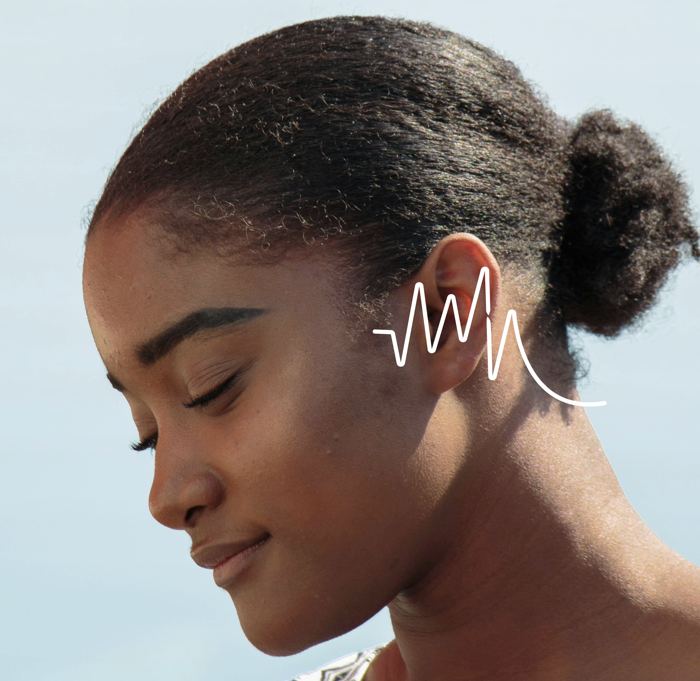
Resources
⭐️ Why do people fitted with hearing aids not wear them?
⭐️ Vision Facts and Statistics
⭐️ 9 Statistics About Glasses You Might Not Have Known About
⭐️ Quick Statistics about hearing
⭐️ EYEWEAR INDUSTRY STATISTICS AND FACTS 2023
⭐️ Hearing Difficulties Among Adults: United States, 2019
⭐️ Why are glasses more acceptable than hearing aids?
⭐️ Have You Heard? Audicus Launches Fashion Hearing Aid Collection

